Wave of Success: Miros Secures 'Numerous' WaveSystem Contracts in First Half of 2023
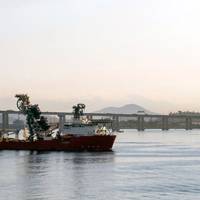
Wave measurement specialist Miros said Tuesday it had secured numerous contracts with new clients in the offshore vessel market during the first half of this year for its sea state as a service offering.The new as a service (aaS) contracts span the global offshore vessel market, with particular emphasis on the key markets of UKCS, Norway, and Brazil, Miros said, without providing details on contract values or client identities.The projects will see the Miros WaveSystem deployed across vessels…
Miros' WaveSystem for Subsea 7's Petrobras-bound Offshore Vessel Trio
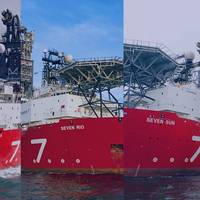
Subsea 7 has awarded Miros Group agreements to install its internet of things (IoT) dry-sensor WaveSystem on three of its pipelay support vessels, ti deliver accurate wave measurements via Miros' cloud-based graphical user interface (GUI) Miros.app.As part of three 3-year contracts and project requirements for the monitoring of wave and current to a water depth of 10 meters, WaveSystem will be installed on Seven Waves, Seven Rio and Seven Sun vessels, and the deal will see Subsea…
NAPA’s Passenger Ship Stability Management Tool Gains DNV Type Approval
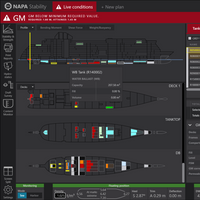
Classification society DNV has awarded type approval to NAPA’s new onboard stability software for the passenger sector – NAPA Stability, a new onboard stability solution that will replace NAPA Loading Computer, the stability management solution for passenger ships.This type approval establishes that the software meets DNV’s requirements for the assessment of ship stability in both intact and damaged conditions, and the relevant IACS requirements to enable Safe Return to Port (IACS UR L5 Type 4 requirements)…
Miros Extends Services to Prysmian Advanced Cable Lay Vessel
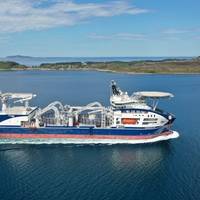
Miros AS announced it has signed an agreement with energy and telecom cable systems company Prysmian Group for the installation of its IoT dry-sensor WaveSystem including Miros Cloud Services, delivering real-time wave and current data on board the cable layer Leonardo Da Vinci delivered earlier this year.“A key area in our discussions with Prysmian was the ease and availability of real-time data accessible through our cloud-based Graphical User Interface (GUI) Miros.app. We believe…
Groundbreaking Tech Unlocks Optimal Routing and Usability

End-users trialing the VoyOpt voyage optimization service say it beats the competition in terms of the number of data sources it aggregates, ease of use and bottom-line benefits.Fuel consumption is the leading cost driver in shipping and remains the top fiscal concern of shipowners amid uncertainty surrounding bunker costs and availability. “Managing fuel consumption effectively means owners need increasingly to adopt new performance tools that leverage cutting-edge technology, including artificial intelligence.
Staying Vigilant On and Beneath the Waterline
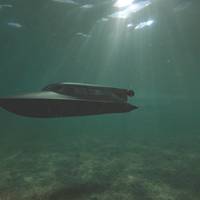
The ocean is a very large and increasingly congested place. More and more shipping and industry is using it. But the risks hidden below the waterline, that established navigational tools don’t always detect, remain.But what if the trend for new surface-based sensor technology, the likes of which enable cars to detect potential collision hazards, could be available for shipping to detect underwater obstacles?That’s just what Sonardyne International Ltd. has developed with its new Vigilant forward looking sonar (FLS).
LADAR: Laser Sensor Technology for the Maritime Industry
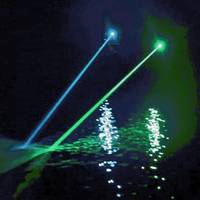
Research scientist and entrepreneur Sverre Dokken believes laser-based remote sensing has big potential in the maritime domain. But what is LADAR, who’s it for and what are the key benefits?“Our mission is to be the world leader in innovative maritime sensor products that enhance the safety and security of shipping and all manner of offshore activity,” says Ladar Ltd (LDR) principal Sverre Dokken.In the sensor vanguardEssentially a laser-based navigational aid, LADAR (Laser Detection and Ranging) combines long-distance object detection with high-accuracy measurement…
Industry Hails EU Maritime Single Window
The EU Social Partners in the maritime sector, European Community Shipowners' Associations (ECSA) and European Transport Workers' Federation (ETF), welcome the adoption by Members of the European Parliament of the proposal for a Regulation establishing a European Maritime Single Window environment.The industry associantions said in a joint press release that they look forward to the soon expected formal adoption by the Council in order for the Regulation to enter into force and deliver on the much-awaited administrative simplification for shipping.For several years now the maritime transport social partners have called for a reduction of the administrative burden for shipping.
The Future: Autonomous Robotic Hull Grooming
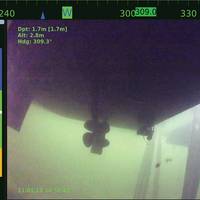
Ship hull biofouling has significant impacts on fleet readiness, ship performance, cost, and the environment. Biofouling results in increased hydrodynamic drag which results in greater fuel use and greater emissions per distance traveled than a hydraulically-smooth hull. A study by Schultz, et al. found the typical fouling rating (FR) of a US Navy DDG-51 class vessel, FR-30, increases fuel consumption by 10.3% over a hydraulically-smooth DDG-51. Results showed that reducing this…
Shippers Welcome European Maritime Single Window
The European Community Shipowners’ Associations (ECSA) and the World Shipping Council (WSC) welcome the adoption of a General Approach on the proposal for a European Maritime Single Window environment by Transport Ministers.European co-legislators have been working intensively to reduce the administrative burden shipping faces. This burden stems from today’s unharmonised and inefficient reporting obligations and mechanisms within the EU."ECSA and WSC are pleased with the progress being made in both Council and European Parliament towards the establishment of a European Maritime Single Window environment (EMSWe)," said a press note from ECSA.Martin Dorsman…
Rutter Releases Sigma S6 V9.2.0
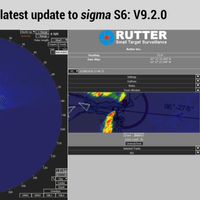
Rutter Inc. has released the latest update to the Rutter sigma S6 product line, version 9.2.0. This new version is being released for general availability this week. It is also available as an upgrade on existing systems for qualifying customers.Rutter’s proprietary radar data processing system interprets data from both conventional marine navigational and coastal surveillance radars, providing enhanced radar imagery and state of the art detection, tracking, and measurement capabilities.
Eco Marine Power to Use Artificial Intelligence
To further enhance its research capabilities Eco Marine Power announced today that it will begin using the Neural Network Console provided by Sony Network Communications Inc., as part of a strategy to incorporate Artificial Intelligence (AI) into various ongoing ship related technology projects including the further development of the patented Aquarius MRE (Marine Renewable Energy) and EnergySail. The Neural Network Console is an integrated development environment using deep learning for AI creation and has been used in deep learning applied technology development within Sony since 2015. Various functions are included such as recognition technology and a full-fledged GUI (graphical user interface) and these allow for deep learning programs to be developed.
Tuco, Sea Machines Partner to Build Autonomous Workboats
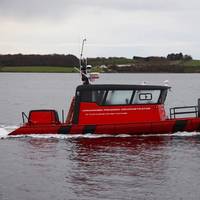
Boston based Sea Machines Robotics said it will collaborate with Danish boat builder Tuco Marine to offer remote and autonomous control products as factory options in Tuco’s line of ProZero workboats. Last week, the two companies successfully demonstrated the remote command capability of the Sea Machines 300 technology at Danish Maritime Authority's “Zooming into Marine Autonomy Conference” where they gave live remote command of the water craft to Danish Minister of Industry, Brian Mikkelsen.
New Integrated Solution for DP Reference Systems
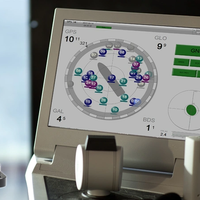
Fusing its decades of experience within the development of in-house GNSS and inertial technology, Kongsberg has created a cutting-edge integrated solution for DP reference applications. DPS i2 and DPS i4 are fully scalable DP reference solutions that improve operational efficiency and safety for high-precision applications. The new integrated solution has been in operation aboard the OSV Bourbon Arctic in Northern Norway for the past six months. DPS i2 and DPS i4 utilize Kongsberg’s motion gyro compass (MGCTM) and motion reference unit (MRUTM) technology.
ABB's RDS Update Brings Predictive Capabilities of Big Data
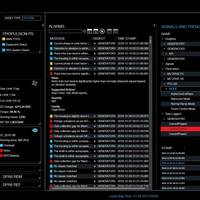
ABB is deepening its analytical and predictive approach to vessel maintenance with the latest upgrade of its Remote Diagnostic Service (RDS). ABB is one of the leading advocates of the digitalization of shipping and has already launched Integrated Operation Centers in Asia, Europe and the USA where data produced by ships is received and monitored. The upgraded software functionalities will give more power and transparency to the shore side operations of ship owners whilst ABB has stepped up its proactive monitoring of the data and predictive analytics.
BCG Donates Simulation Software to Support US Naval Academy
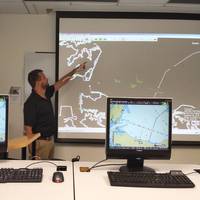
Maritime training solutions provider Buffalo Computer Graphics Inc. (BCG) has donated its Enhanced Graphical User Interface (GUI2) simulation software to the U.S. Naval Academy Foundation in Annapolis, Md. for distribution to the academy’s seamanship and navigation department. BCG’s donation included four software licenses to support past donations from Northrup Grumman Corporation of the Navy’s Electronic Chart Display and Information System (ECDIS) to train midshipmen on the charting system they will encounter once they graduate and move out to the fleet.
BCG Debuts Desktop Ship Simulator

Buffalo Computer Graphics (BCG) Inc. has launched a turnkey desktop ship simulator that adds a visual component to the company’s existing line of radar and communication simulation products. The system represents the integration of BCG products with third party software for a complete desktop simulator which features an out of window single channel visual display. The simulator is scalable to meet the requirements and budget of the customer; but is suited for small schools looking to add ECDIS and Radar/ARPA capability to their list of available course offerings, BCG said.
Hybrid Power for Workboats: The Future is Now
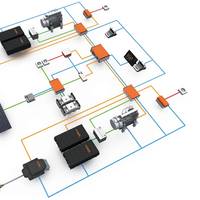
Hybrid marine power and propulsion systems for workboats isn’t farfetched. In fact, it may be essential. In 2015, two significant developments are going to make many operators, owners and builders of professional vessels consider hybrid marine power. The new emissions laws – here and abroad – and the incentives for high technology manufacturers to invest in developing highly efficient batteries are the primary drivers. That said; dramatically reducing pollution in both water and…
BCG Delivers Simulation Software to MTI
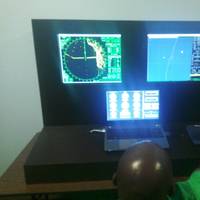
Buffalo Computer Graphics (BCG) Inc. has delivered a series of simulation products to Maritime Training International (MTI), in Jacksonville, Fla. MTI contacted BCG earlier this year and opened discussions to add simulation capabilities to its existing inventory of maritime training resources. MTI shipped three laptops to Buffalo for BCG engineers to install and configure two of the laptops with Raytheon’s NSC ECDIS software and ARPA/Radar software in addition to BCG’s Virtual Steering Stand (VSS) software…
NSRP Awards $11m for R&D Project Portfolio
The Executive Control Board of the National Shipbuilding Research Program (NSRP) has selected a new round of research and development projects for award, as part of the program's continuing mission to reduce costs associated with U.S. shipbuilding and ship repair. These new projects, valued at over $11 million, including cost share, were among those proposed in response to Research Announcement 13-01, issued in June. Objective: The goal of this project is to transfer a cost-saving and quality-enhancing technology from the aerospace industry to the shipbuilding industry. The vision is to demonstrate the superiority of laser peening over select current shipbuilding processes in specific applications.
Seagull Maritime AS debuts STA 4.0
Seagull Maritime AS has launched Seagull Training Administrator 4.0, an updated version of the shipping industry’s most widely used training administrator, in a move the company says makes computer-based packages even easier to use. Norway-based Seagull Maritime has built on customer feedback gathered over a number of years to extend and improve STA 4.0’s user workflow and functionality, and to add new functions, with the entire overhaul neatly presented via a new user interface. As with previous versions, STA 4.0 is available to seafarers onboard ship and over the Worldwide Web. “STA 4.0 is certainly a logical advance from the technical point of view in line with market expectations…
Nautical Pedigrees Engineer Success of Top Marine Developers
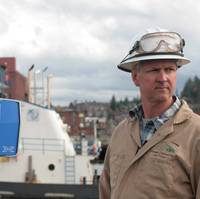
The impact of technology on one of the world’s other oldest professions has been nothing short of revolutionary, in some cases forcing the marine industry to finally lay aside centuries of thinking and time-honored, if not always accurate, tools. The digital age has not only transformed almost every aspect of seafaring vessels and the processes undertaken on board, but it has sharpened and strengthened the calculations and equations used to measure, shape, process, speed, track and image the steps involved in creating parts, solving problems and rendering reality-based training.
Harris Helps Prepare NOAA GOES-R Extreme Weather Satellite
International communications and information technology company, Harris Corporation, has delivered a system that will help prepare National Oceanic and Atmospheric Administration (NOAA) satellite operators for the new Geostationary Operational Environmental Satellite – R (GOES-R) Series weather satellites, a primary tool for detecting and tracking hurricanes and severe weather. The new Mission Management Capability enables operators to prepare ground-based satellite command and control operations and processes more than two years ahead of the launch of the first GOES-R satellite. A NOAA and NASA team also will use the Harris system to test the command and control procedures with the satellite as it is assembled by mission partner Lockheed Martin.





